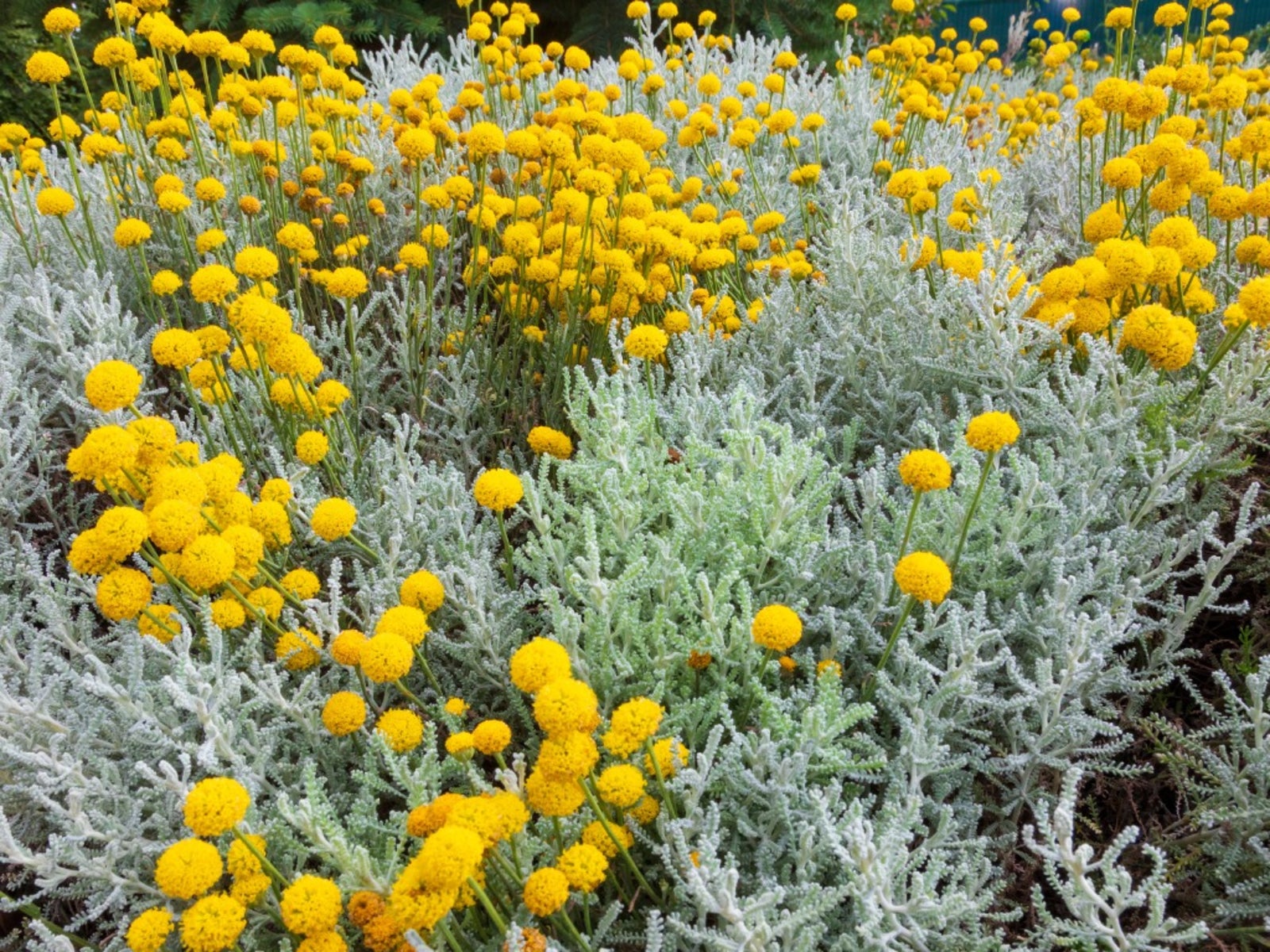What Is Santolina: Information On Santolina Plant Care

Santolina herb plants were introduced to the United States from the Mediterranean in 1952. Today, they are recognized as a naturalized plant in many areas of California. Also known as lavender cotton, Santolina herb plants are members of the sunflower/aster family (Asteraceae). So what is Santolina and how do you use Santolina in the garden landscape?
What is Santolina?
An herbaceous perennial suited to hot, dry summers and full sun, Santolina (Santolina chamaecyparissus) is indigent to areas of sandy, rocky infertile soils but will also do well in garden loam and even clay provided it is well amended and well-drained. These evergreen shrubs have either silvery-grey or green leaves reminiscent of conifers. Santolina has a mounded, round, and dense habit reaching only 2 feet (0.5 m.) high and wide with vibrant yellow ½-inch (1.5 cm.) flowers perched on stems above the foliage, which are notably attractive in dried flower arrangements and wreaths. The silver foliage makes a nice contrast to other green tones of the garden and persists through the winter. It is a prominent specimen for xeriscapes and mixes well with other Mediterranean herbs such as lavender, thyme, sage, oregano, and rosemary. Lovely in a mixed perennial border along with rockroses, Artemisia, and buckwheat, growing Santolina has a virtual plethora of uses in the home landscape. Growing Santolina can even be trained into a low hedge. Give the plants plenty of room to spread or allow them to take over and create a massed ground cover. Santolina herb plants also have a fairly pungent aroma akin to camphor and resin mixed when the foliage is bruised. Perhaps this is why deer don't seem to have a yen for it and leave it alone.
Santolina Plant Care
Plant your Santolina herb in areas of full sun through USDA zone 6 in almost any type of soil. Drought tolerant, Santolina herb requires minimal to moderate irrigation once established. Overwatering will likely kill the plant. Wet, humid weather will foster fungal development. Prune Santolina back drastically in the late winter or spring to keep it from splitting or dying out in the center of the plant. However, if this happens, other Santolina plant care indicates ease of propagation. Simply take 3-4 inch (7.5-10 cm.) cuttings in the fall, pot them, and provide heat, then plant in the garden in summer. Or, the seed can be sown under a cold frame in fall or spring. The herb will also begin to grow roots when a branch touches the soil (called layering), thereby creating a new Santolina. Besides overwatering, the downfall of Santolina is its short life; about every five years or so (as with lavender) the plant needs to be replaced. Luckily it is easy to propagate. Plants can also be divided in the spring or fall. Santolina herb plant is fairly pest and disease resistant, drought tolerant and deer resistant, and easy to propagate. Santolina herb plant is a must-have specimen for the water-efficient garden or an excellent replacement when eliminating a lawn entirely.
Gardening tips, videos, info and more delivered right to your inbox!
Sign up for the Gardening Know How newsletter today and receive a free copy of our e-book "How to Grow Delicious Tomatoes".

Amy Grant has been gardening for 30 years and writing for 15. A professional chef and caterer, Amy's area of expertise is culinary gardening.
-
 Looking For Plants To Give You The Soft And Fuzzies? Try These 5 Fuzzy Leaf Plant Options
Looking For Plants To Give You The Soft And Fuzzies? Try These 5 Fuzzy Leaf Plant OptionsLovers of texture, drama, silver foliage and tactile plants will adore these special sensory garden additions. These fuzzy leaf plant options will leave you all aglow
By Susan Albert
-
 Get Ready For A Summer Of Hummers! Grow These Full Sun Hummingbird Plants and Flowers
Get Ready For A Summer Of Hummers! Grow These Full Sun Hummingbird Plants and FlowersIf you’re lucky enough to enjoy a sunny backyard, make sure you are maxing out on your pollinator opportunities and grow these full sun hummingbird plants and flowers
By Tonya Barnett